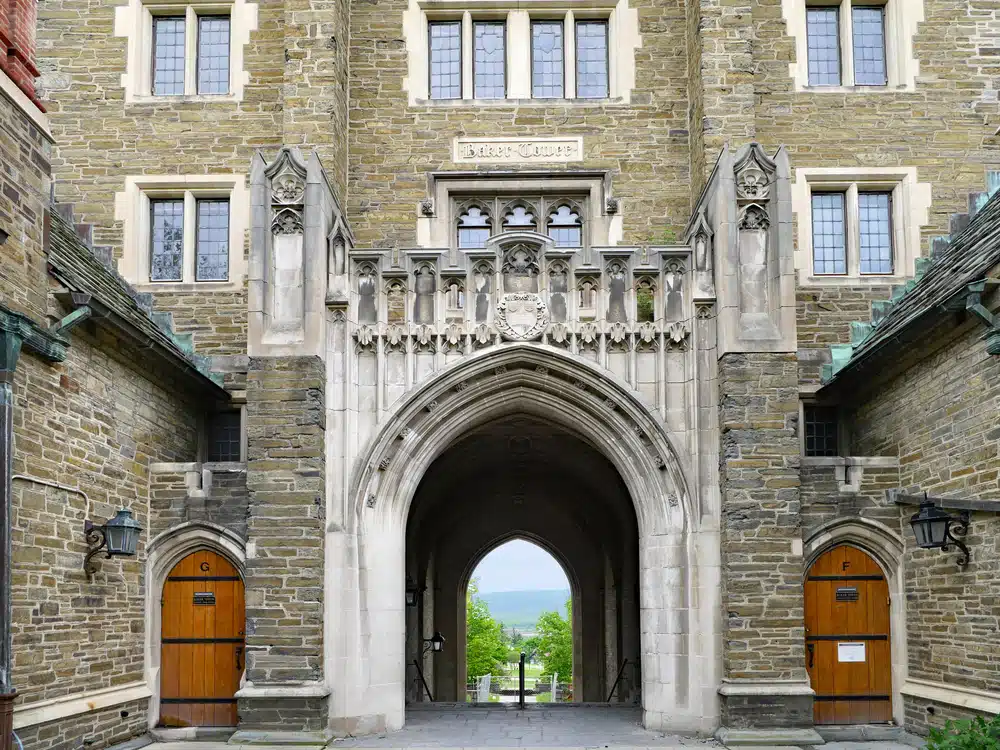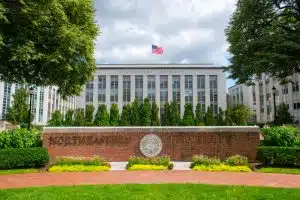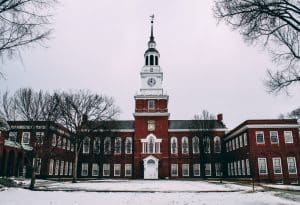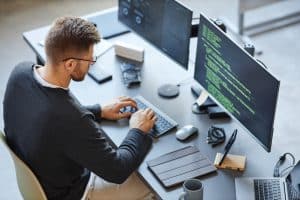Cornell’s Official Mascot
Cornell University, an Ivy League institution with a rich history and diverse community, has always been a place of tradition and innovation. However, one aspect that stands out in the university’s culture is the absence of an official mascot.
While many universities have an animal or figure that symbolizes their spirit, Cornell’s official mascot remains a subject of intrigue. This absence, however, has given rise to a unique phenomenon: the love and adoration for the Big Red Bear, an unofficial symbol that has captured the hearts of many.
In this article, we will explore the significance of mascots in college culture, their role in fostering unity and spirit, and the unique case of Cornell’s official mascot, or rather, the lack thereof.
What is the significance of a mascot?
Mascots are more than mere symbols; they embody a college’s identity, values, and aspirations. From the roaring lions to the soaring eagles, mascots represent the essence of what a university stands for.
In the context of Cornell’s official mascot, the absence of a formal figure has led to a unique cultural phenomenon. The students and alumni have embraced the Big Red Bear as a symbol, even though it’s not officially recognized. This situation illustrates how mascots can transcend official status and become a vital part of the community’s collective consciousness.
The role of mascots in fostering unity and spirit
Mascots play a crucial role in fostering unity and spirit within a university. They become rallying points during sporting events, symbols of pride during academic achievements, and icons of shared values and traditions.
The Big Red Bear, though not Cornell’s official mascot, has become a beloved figure that unites students, faculty, and alumni. Its presence at games, rallies, and events creates a sense of belonging and pride that transcends the boundaries of official recognition.
The bear’s embodiment of strength, courage, and resilience resonates with the Cornell community, making it a symbol that’s cherished and celebrated.
What is Cornell’s school mascot?
According to officials, there is no Cornell official mascot. However, the Big Red Bear has become an unofficial symbol of the university. Countless generations of Cornell students and faculty have grown to know and adore.
Bears quickly became the most famous mascot for the school’s many sporting teams not long after the collegiate sport was introduced. The first live Cornell bear, which was given the name “Touchdown,” made its debut in 1915, during the school’s perfect and national championship-winning football season.
Undergraduate students who are passionate about the Big Red Bear adopt a fuzzy outfit and perform at a variety of formal Cornell festivities and varsity sporting events, including all football games.
The Big Red Bear’s story reflects Cornell’s ethos, where tradition meets innovation, and the community’s voice shapes its identity. It’s a story that adds a rich layer to the narrative of Cornell’s official mascot, making it a subject that continues to fascinate and inspire.
What Makes the Big Red Bear So Special?
The Big Red Bear holds a special place in the hearts of the Cornell community. While not Cornell’s official mascot, it has become a symbol of unity, strength, and pride for students, faculty, and alumni alike.
Its unofficial status has not diminished its significance; rather, it has allowed the bear to become a unique and organic representation of the university’s spirit. The Big Red Bear’s appeal lies in its ability to resonate with the community, embodying the values and aspirations that make Cornell a place of excellence and innovation.
The Unofficial Status of the Big Red Bear
The Big Red Bear’s unofficial status is a fascinating aspect of Cornell’s culture. Unlike other universities where the mascot is a formal and recognized symbol, Cornell’s official mascot remains undefined, allowing the Big Red Bear to rise as an emblem of the university.
This unofficial status has given the bear a certain mystique and charm, making it a symbol that is embraced wholeheartedly by the community. The lack of formal recognition has not hindered the bear’s popularity; instead, it has allowed it to become a symbol that is shaped by the people of Cornell, reflecting their passion, creativity, and unity.
The Symbolism of the Big Red Bear
The symbolism of the Big Red Bear goes beyond its physical representation. Though not Cornell’s official mascot, it embodies the university’s core values of courage, resilience, and community spirit.
The bear’s strength and determination mirror the academic rigor and pursuit of excellence that define Cornell. Its warm and approachable demeanor symbolizes the inclusiveness and camaraderie that are central to the university’s culture.
The Big Red Bear is more than a mascot; it’s a reflection of what Cornell stands for, a symbol that captures the essence of the university in a way that resonates with everyone who is part of it.
The Big Red Bear’s Presence in University Events
The Big Red Bear’s presence in university events is a testament to its significance within the Cornell community. From sporting events to pep rallies, the bear is a constant fixture, energizing the crowd and fostering a sense of unity and pride.
Though not Cornell’s official mascot, the Big Red Bear’s role in these events is as vital and cherished as any official symbol. Its ability to rally the community, create memorable moments, and add a touch of joy and excitement to university life makes the Big Red Bear a beloved figure.
Its presence is a celebration of the unique identity of Cornell, where an unofficial symbol can become a powerful and unifying force that brings people together.
What are some Cornell traditions?
Cornell University, which was established in 1865, is the only university in the Ivy League to be classified as a land-grant university. And it is packed with customs, some of which are just plain fun while others are a little bit peculiar for others but nevertheless wholesome.
Dragon Day
A giant dragon that was constructed by first-year architecture students is brought out for a procession around the campus around the time of St. Patrick’s Day each year. The dragon lumbers to the Arts Quad where it is slaughtered while being heckled by competing engineering students.
It is accompanied on its journey there by architecture students dressed in extravagant costumes. Over the course of a century and a half, this spring ritual has been regarded as one of the university’s most cherished customs.
Willard Dickerman Straight ’01, a Cornellian, is credited with coming up with the concept of Dragon Day. He was of the opinion that there should be a special day dedicated to the College of Architecture.
Ice Hockey
The men’s ice hockey team, known as the Big Red, is one of the most popular spectator sports at Cornell. Once you’ve mastered the Lynah Rink cheers, you’ll be ready to go.
A helpful hint: You may not witness the Cornell official mascot but do trust us when we say you won’t believe the outfits worn by the Zamboni driver. Do check it as he prepares the ice for home games. They’re out of this world.
Slope Fest
Slope Fest is known for providing attendees with free food, beverages, carnival activities, prizes, and live music.
For the event that took place this year, organizers arranged for a giant screen to be set up on Ho Plaza, where attendees could see a projection of the Slope Day concert. In between sets on the Main Stage, there were performances by student groups on the other stages.
Bubbly, Gatorlyte, tea, and chips were among the freebies provided by Pepsi. In addition, there was an unlimited supply of free doughnuts, cookies, pastries, pop tarts, popcorn, snow cones, and Cornell Dairy ice cream, which is a crowd favorite.
Slope Day BreakFEST
Students during the festive event start their day with a free sandwich, fruit, and water in front of the Schwartz Center in Collegetown. This is hosted by Cornell Health, with food provided by Cornell Dining.
Cornelliana
The students at Cornell speak their own distinct lingo. When you are familiar with the terminology, navigating the campus and participating in all of its events is a lot less difficult.
The following is a list of some of the terminologies that are used on campus:
- Appel Commons: A place for social gatherings that also houses the North Star eating hall.
- Cocktail Lounge: Study area located in the underground addition of Uris Library
- Collegetown: The residential district that lies directly to the south of the main entrance to the Cornell University campus; it features a variety of stores, restaurants, and apartment complexes.
What is the recreation and sports landscape at Cornell?
Cornell has a lot to offer in terms of sports and physical activity, whether it is playing in an intramural dodgeball league or cheering on the “Big Red” during a hockey or basketball game.
Big Red Athletics
There are 37 varsity sports teams at Cornell, and both men and women can participate. Members of the Cornell community come out to cheer on the student-athletes, despite Cornell’s official mascot being non-existent. The cheers help foster a strong sense of school spirit.
In the same way that the name Cornell University is synonymous with academic superiority, the Big Red sports program is entrenched in history and has enjoyed a great deal of success in the past.
Even more importantly, it has been a bellwether of example by making its sports and physical education program an intrinsic part of the educational process without allowing its academic standards to decrease in the least way.
In 1865, Cornell University was established, and almost immediately afterward, athletic programs were established there. It is stated that Cornell has fielded a baseball team ever since the first nine men registered for the program.
The earliest administrative organizations took the shape of clubs, such as the Tom Hughes Boat Club and the Cornell Baseball Club, amongst others. Each club operated independently of the others and financed itself through membership dues, charitable contributions, and fundraising events.
Intramural Sports
Cornell has created a vast network of additional opportunities for students to choose from in case participating in varsity athletics is not their cup of tea. Each academic year, Cornell hosts more than thirty different leagues and tournaments, catering to players of varying ability levels.
How Has the Community Responded to the Big Red Bear?
The community’s response to the Big Red Bear has been overwhelmingly positive and affectionate. Though not Cornell’s official mascot, the bear has become a symbol of unity, pride, and tradition for the university.
Its presence at events, its likeness on merchandise, and its role in fostering school spirit have endeared it to students, faculty, alumni, and even visitors. The Big Red Bear’s ability to transcend its unofficial status and become a cherished emblem of the university speaks volumes about the community’s embrace of this unique symbol.
Faculty and Administration Perspective
From the faculty and administration’s perspective, the Big Red Bear’s rise as an unofficial symbol of Cornell has been a fascinating and welcome development. While Cornell’s official mascot remains undefined, the embrace of the Big Red Bear by the community has filled a symbolic void.
Faculty and administration have supported and acknowledged the bear’s role in university life, recognizing its ability to foster unity and spirit. The bear’s presence at official events, its integration into university branding, and its alignment with Cornell’s values have made it a symbol that the administration respects and celebrates.
It’s a unique case where an unofficial symbol aligns so well with the university’s ethos that it becomes an integral part of its identity.
Student and Alumni Affection
The affection for the Big Red Bear among students and alumni is profound and enduring. Though not Cornell’s official mascot, the bear has become a symbol that resonates deeply with those who have been part of the university’s journey.
Students see the bear as a representation of their strength, resilience, and community spirit. Alumni carry the memory of the bear as a cherished part of their Cornell experience. The Big Red Bear’s ability to connect with different generations, foster a sense of belonging, and create lasting memories makes it a symbol that transcends its unofficial status.
It’s a reflection of the community’s love for their university and a symbol that continues to inspire and unite, embodying the essence of what makes Cornell special.
What does the future hold for the Big Red Bear?
The future of the Big Red Bear, though not Cornell’s official mascot, seems promising and filled with potential. Its unofficial status has not hindered its growth as a symbol of unity, pride, and tradition within the university.
The community’s embrace of the bear, coupled with the administration’s support, suggests that it will continue to be a cherished emblem of Cornell’s spirit. There may even be discussions and debates about formalizing its status, reflecting the community’s desire to recognize the bear’s significance.
Reflection on the unique identity of Cornell
The story of Cornell’s official mascot, or rather the lack thereof, and the rise of the Big Red Bear is a reflection of Cornell’s unique identity. It’s a tale that encapsulates the university’s blend of tradition, innovation, and community-driven passion.
The absence of an official mascot has not led to a void but rather a flourishing of community spirit around an unofficial symbol. This phenomenon speaks to Cornell’s ethos, where the voice of the community shapes its identity, and creativity meets tradition.
The Big Red Bear’s story adds a rich layer to the narrative of Cornell, making it a subject that continues to fascinate and inspire. It’s a testament to the power of symbols and the way they can resonate with people, capturing the essence of a place in a way that’s both profound and enduring.
Experience the Cornell School Spirit
You should seek the advice of professionals who work in the field of college admissions, such as those who work at AdmissionSight, in order to increase your chances of being accepted at Cornell.
Because of its more than a decade of experience assisting students just like you in gaining admission to the colleges of their first and second preferences, AdmissionSight has become the most trusted name in the field of college admissions advice. Our successful clients can vouch for that.
Please get in touch with us as soon as possible so that we can organize an initial consultation for you that will be offered at no cost.









































